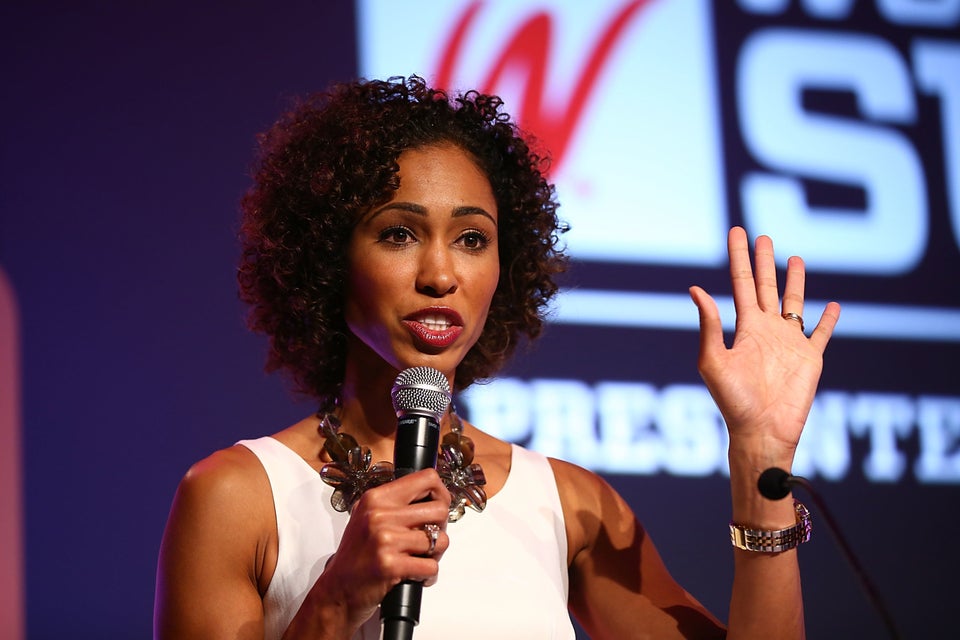Sage Steele Opens Up About Being A Biracial Woman In Sports Media
The Huffington Post
2015-01-21
Justin Block, Associate Sports Editor
Juliet Spies-Gans, Editorial Fellow, HuffPost
The ESPN host talks sexism, racism, NBA Saturday Primetime on ABC and that infamous moment with Bill Simmons
Picture the scene: It’s a sweaty, crowded NFL locker room a handful of miles from the heart of Baltimore, a little over a decade ago. There’s a scrum of reporters, trying to inch closer and closer to the prize interview: Ray Lewis. And as the voices shout over one another, urging the linebacker to look every which way, one journalist’s tone differentiates itself from the rest.
It’s the voice of Sage Steele, and as the only woman amid the horde of media members, the octave of her voice allows her to be the one to grab and hold onto Lewis’ attention.
Today, the 43-year-old Steele is known as both the face and the voice of ABC and ESPN’s NBA Countdown. Come Saturday, she’ll be speaking to millions of us through our TV sets, as the host of the new NBA Saturday Night on ABC package. And come June, she’ll ring in the NBA Finals as emcee of the biggest show of the season, working with names like Jalen Rose and Doug Collins to introduce and analyze the league’s marquee event.
But it hasn’t always been like this for Steele. A self-described army brat bullied throughout high school for her biracial background, Steele has dealt with a unique blend of discrimination in her time. One day she’s too white, the next she’s too black. Her curly, un-styled hair is considered either an asset or a detriment, depending on the week. And even as she has received rave reviews for her work with ESPN, she’s anticipating the day when her increasingly grey locks age her out of her job in a way that simply wouldn’t happen to a man.
In a word, she’s surrounded on all sides by -isms. Ageism, sexism, racism — you name it, Steele has felt it. But today, in her 21st year in the biz, the longtime journalist is able to reflect on her time on studio sets and in locker rooms, and decipher where and when those constant currents of isms, don’ts and can’ts have made her stronger, sharper and more apt for the job.
Steele recently spoke with The Huffington Post about everything from the discrimination she’s faced to her relationship with Stuart Scott, from the importance of having thick skin to that GIF of her and Bill Simmons. She’s spent the last two decades in the trenches — those grimy, Gatorade-stained locker rooms of Indianapolis and Baltimore — and now she’s explaining how she was able to stay on her feet through it all, remaining humble, hungry and happy, no matter what…
Read the entire interview here.
